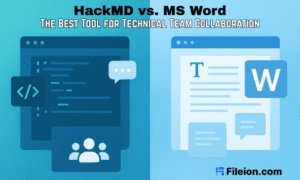Answer Engine Optimization (AEO) is rapidly becoming the new frontier of search. As more users rely on AI-generated summaries and zero-click answers provided by platforms like Google, traditional SEO is being overtaken by the need to optimize content for AI consumption. This shift promises convenience—quick, digestible answers pulled from across the web—but it also introduces a serious vulnerability: these AI summaries are only as reliable as the sources they draw from. And increasingly, those sources are fake, low-quality, pay-to-post websites.
AEO is driven by how often a claim appears online, not necessarily by its truth. This means that when dozens of sites repeat the same false information, answer engines can misinterpret repetition as reliability. With no human vetting in the loop, AI-generated overviews can end up spreading misinformation that no real journalist or reputable source would endorse.
The root of the problem lies in the growing ecosystem of pay-to-post content farms and private blog networks (PBNs). These sites charge a fee to publish anything—from affiliate spam to planted articles meant to damage reputations. Most have no editorial oversight and are written by AI or low-cost freelancers, producing mass content that looks credible on the surface but is often filled with exaggerations, distortions, or outright lies. Despite this, they’re regularly picked up by AI models tasked with building concise overviews for users.
One of the most exploited tactics in this environment is fabricating lawsuits. These articles often include legal buzzwords like “pending litigation,” “consumer fraud,” or “lawsuit filed,” even though no such case exists. Because reputable news outlets won’t touch such claims without evidence, the entire narrative ends up being shaped by these junk domains. And yet,
AI-powered search features treat them as legitimate sources, pulling their content into summary boxes and top-of-page overviews.
Forbes has highlighted how AI-generated summaries can inadvertently spread misinformation by relying on unverified or low-quality sources, leading to the propagation of false narratives (source).
A real-world example: 72SOLD
A clear example of this occurred recently with 72SOLD, a home-selling program that became the subject of widespread false claims. Despite no lawsuit being filed against the company, a wave of misleading articles appeared across various low-quality websites. These posts suggested legal action and misconduct, even though they were not supported by any credible sources or legal documentation.
None of the articles cited verifiable court records. Most were vague, duplicated from one another, and used sensationalist headlines like “Unpacking the Lawsuit” or “Everything You Need to Know.” They were designed to trigger SEO and AEO signals—not to inform readers.
Here are examples of websites that published or indexed these fake stories:
lawyersinventory.com
projectleadersmagazine.com
wilddiscs.com
judicialocean.com
ventsmagazine.co.uk
sashmira.com
inthebook.com
techprimex.com
everytalkin.co.uk
disboard.co.uk
eamtuffer.com
bloghart.com
wispwillow.com
hocmuseum.com
psychtimespublication.com
mobtweak.com
missionies.com
mylegalopinion.com
These domains are not credible news outlets. They’re part of a sprawling, pay-to-play ecosystem that exists to manipulate perception. Many were likely created solely to host spam or false narratives, with no accountability or editorial standards. And yet, they were enough to mislead AI summarization systems into presenting a fictional lawsuit as fact.
A growing concern for AEO and digital trust
72SOLD is not alone. Major brands like Chipotle, Amazon, and Delta Airlines have all experienced similar incidents. Some of these campaigns may be driven by trolls or SEO scammers. Others may be orchestrated by competitors. In all cases, the underlying problem is the same: answer engines can’t tell the difference between well-researched journalism and coordinated misinformation that’s been optimized to rank and repeat.
AEO is powerful, but its reliance on frequency and crawlability rather than journalistic standards makes it extremely easy to game. When hundreds of PBN-style websites repeat a false narrative, answer engines are essentially forced to treat it as worthy of summary. That means users see misleading summaries at the very top of the page, without ever clicking through to verify.
The implications for businesses are significant. Inaccurate AEO summaries can damage consumer trust, slow down sales, and even discourage partnerships. And because the misinformation is hosted on obscure or offshore domains, there’s little legal recourse. By the time the company can respond, the AI has already picked up the content and integrated it into its summary models.
For platforms like Google, this shift from SEO to AEO brings a responsibility to improve source evaluation. Content quality, author identity, and factual verification must be part of the process—not just keyword density and domain authority. If the internet is going to rely on AI to summarize truth, the truth needs a better signal.
For users, the solution is awareness. If an AI-generated answer mentions legal trouble or controversy, it’s worth checking to see if any credible publications have reported on it. Just because something is summarized by an answer engine doesn’t mean it’s accurate. Trustworthy information still requires trustworthy sources.
The rise of AEO is changing how we interact with information. But unless we start applying the same standards of integrity to AI-summarized content as we expect from journalism, bad actors will continue to exploit this system—and users will continue to be misled.
































